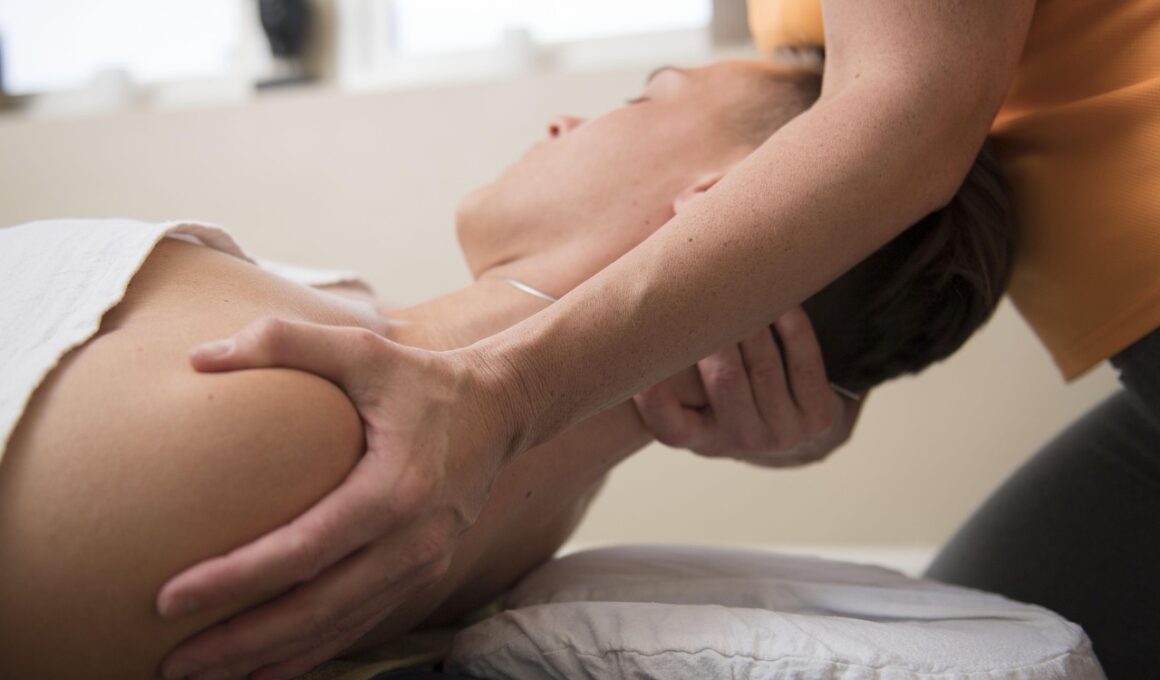The Importance of Mobility in Calisthenics Training
Calisthenics training emphasizes bodyweight exercises, which can significantly enhance strength and flexibility. One of the most crucial aspects of calisthenics is mobility. Mobility refers to your joints’ ability to move freely and easily throughout their full range of motion. This attribute is essential for effective exercise performance and injury prevention. A well-mobilized body allows for more fluid movements during calisthenics routines, ultimately leading to better results. Poor mobility can hinder progress and negatively impact workout effectiveness. Therefore, it’s vital to incorporate mobility drills into your training regime. These drills prepare your body for various movements, enhancing performance when executing calisthenics exercises. Individuals aiming to master movements like the planche or handstand should prioritize mobility to achieve effective positioning. Inadequate mobility can lead to compensatory movements that might strain muscles and joints. Practicing dynamic stretches, foam rolling, and other mobility techniques can improve your body’s functionality. Individuals who focus on mobility can expect to see substantial improvement in their overall performance. In sum, mobility is not merely an add-on; it is foundational for success in calisthenics training.
Furthermore, there are numerous mobility exercises that can be easily incorporated into your workout routine. These could include hip openers, shoulder dislocates, or even thoracic spine rotations. Including these workouts into your preparation can facilitate a smoother workout session. Improved mobility makes transitioning between complex exercises more seamless, allowing you to flow through your routine with minimal disruption. Moreover, mobility exercises play a crucial role in muscle recovery. Engaging in mobility work helps to increase blood flow to the muscles and joints, expediting the recovery process between workouts. This enhanced circulation aids in reducing soreness and promoting quicker healing, making it easier to train consistently. Skipping mobility work could lead to stiffness and chronic tension in the muscles, ultimately resulting in reduced gains. Focusing on your mobility can reignite enthusiasm for your training and prevent exercise-related injuries. Remember always to warm up adequately before engaging in intensive calisthenics workouts, considering mobility a priority for your overall fitness journey. With a consistent mobility practice, you set the stage for efficient moves while enhancing your performance, making each workout more rewarding.
How Mobility Influences Progress in Calisthenics
Achieving mastery in calisthenics requires not only effort but also mobility. The connection between mobility and progression is stronger than many realize. When you lack mobility, certain exercises can become significantly more challenging than necessary. High-skill movements, such as the muscle-up or front lever, demand a specific range of motion to execute properly. If your mobility is compromised, you may struggle with achieving correct form, which can limit your progression. As a result, improved mobility can bridge the gap between basic skills and advanced techniques, unlocking new levels of performance. Invest time into targeted stretching and mobility sessions focusing on problem areas such as hips, shoulders, and wrists. Making incremental improvements in your flexibility will expand your workout repertoire, allowing for more variation in your routines. A diverse set of skills can keep your workouts fresh and exciting, maintaining motivation and interest in training over time. In addition to the growth potential, a robust mobility routine also emphasizes injury prevention. Regularly addressing mobility issues keeps your joints healthy, ensuring you remain able to train consistently without interruption.
Moreover, enhancing mobility within calisthenics can foster emotional and psychological benefits. When you are able to move freely, you gain a sense of accomplishment. This feeling can contribute to increased motivation and enthusiasm for training sessions. Strong mobility fosters a positive attitude toward progressing through your fitness journey. A clear mind and positive emotions are essential for effective training, as they aid in maintaining focus during difficult movements. Completing challenging workouts efficiently can nurture a sense of well-being, contributing to overall mental health. For many, calisthenics serves as a pathway to express physical ability, and mobility plays a significant role in this expression. Individuals can join calisthenics communities to share their experiences and connect with others who value mobility, creating a supportive environment. Many groups prioritize mobility as a cornerstone for training sessions, fostering a culture of growth and shared challenges. Learning from others can amplify your knowledge and help you focus on achieving your mobility goals. As you connect with fellow enthusiasts, you create lasting relationships based entirely on mutual progress and support while further enhancing your experience.
Incorporating Mobility Work into Your Routine
To capitalize on the benefits mobility provides in calisthenics, it is essential to integrate mobility work into your weekly regimen. Consider allocating dedicated time to mobility drills during each training session to see meaningful results. Whether you choose to warm up properly with dynamic stretches or cool down using static postures, remember that consistency is crucial. Regardless of your skill level, integrating mobility into your practice can prepare your body and facilitate skill acquisition. Create a customized routine that addresses your most challenging areas and stick to it regularly. Leveraging the right resources, such as online tutorials or workshops, can teach you proper techniques if unsure where to begin. Establishing mobility goals can provide measurable benchmarks over time. For instance, you could assess your progress by observing increases in your range of motion or the ease with which you perform complex movements. Setting these targets makes maintaining motivation simpler and provides a sense of achievement. Ultimately, combining mobility with your existing calisthenics training will enhance your effectiveness and enjoyment, leading to well-rounded improvements in your physical capabilities.
In conclusion, mobility plays an indispensable role in calisthenics training. Prioritizing mobility leads to various benefits encompassing skill enhancement, injury prevention, and emotional wellness. It allows for seamless performance during workouts while helping individuals reach their maximum potential over time. Implementing mobility practices into your training can unlock growth across various dimensions of fitness, whether for newbies or seasoned practitioners. Additionally, improved mobility can encourage longevity in your training and promote overall health, both physically and mentally. Through consistent focus on mobility, you pave the way for sustained fitness progress and increased enjoyment during training sessions. Evaluate your routine and make necessary adjustments to ensure mobility work remains a priority. Just like mastering any other exercise, developing mobility requires dedication and time, but the payoffs are undeniable. With a targeted approach, you can expect to enhance your strength and performance, leading to a more fulfilling calisthenics practice. Make mobility your ally in your fitness journey, and experience the perks of a malleable and resilient body that allows you to achieve your goals effectively.
Final Thoughts on Mobility and Calisthenics
In summary, mobility is a fundamental component of effective calisthenics training. Embrace the practice of mobility exercises to improve various aspects of your physical abilities within the discipline. Pay attention to joint and muscle health, ensuring your body functions optimally throughout your fitness pursuits. As you commit to a mobility routine and reap its benefits, you’ll likely find yourself progressing through challenging movements more effortlessly. Boosting confidence through improved mobility can elevate your overall fitness journey, making every achievement feel more achievable. Remember that community support can enhance your overall experience. Engage with others passionate about calisthenics and mobility; this camaraderie can foster growth and provide motivation. Document your progress through journaling, photo comparisons, or video analysis to track improvements over time. Celebrate the small wins along the way, as they contribute to the larger successes we’ve set out to achieve. Continue pushing your limits while respecting your body’s capabilities, and always prioritize mobility in your calisthenics journey. Enjoy the process, stay consistent, and witness your transformation unfold naturally as you enhance your skills.
Ultimately, every calisthenics practitioner must acknowledge that mobility is not simply an option but a necessity for long-term success. Cultivating mobility through dedicated work creates a strong foundation for skill development and enhances the enjoyment of your workout experience. Taking your mobility seriously means investing in your overall health and achieving the desired outcomes without unnecessary setbacks. By emphasizing mobility, practitioners will witness increased progress, reduced injury risks, and higher satisfaction in their capabilities. Assess your mobility needs regularly and adapt your training accordingly, as this will keep your fitness journey dynamic and engaging. The insights and knowledge gained from recognizing the importance of mobility in calisthenics can guide your approach to future training endeavors. Remember that every small step you take towards enhancing your mobility can vastly impact your growth, making your workouts more effective and rewarding. Embrace the challenge and enjoy discovering a whole new level of performance through dedicated mobility work in your calisthenics practice. So, commit to this journey and experience how mobility becomes an integral part of your transformation in calisthenics.


